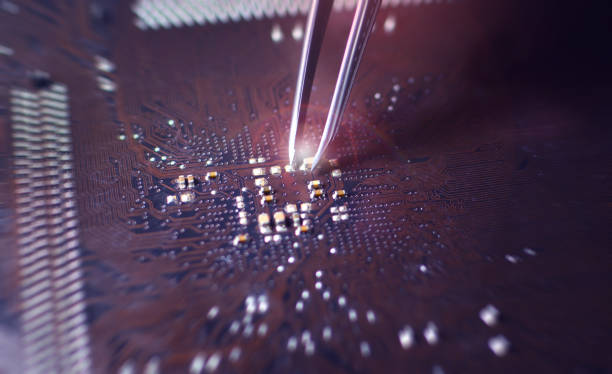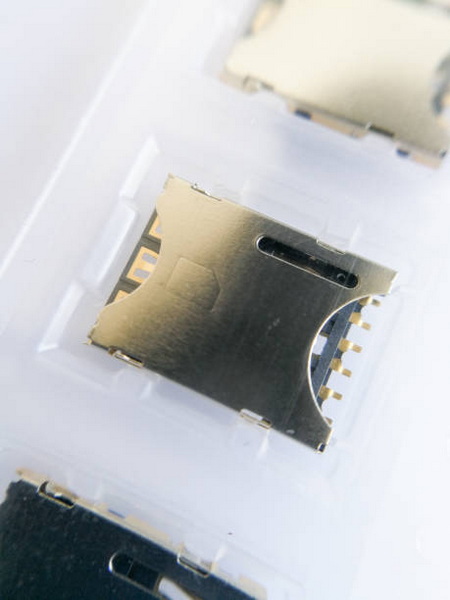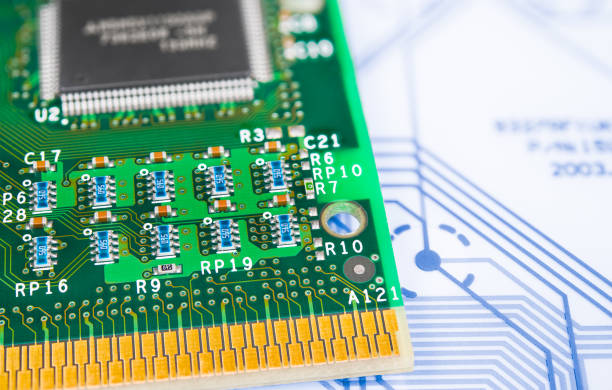Content Menu
● The Evolution of PCB Assembly
● Understanding Surface Mount Technology
>> Key Features of SMT
● The SMT Assembly Process
● Enhancing Efficiency with SMT
>> 1. Increased Automation
>> 2. Higher Component Density
>> 3. Improved Design Flexibility
>> 4. Reduced Material Costs
>> 5. Enhanced Performance
● The Impact of SMT on PCB Assembly Lines
>> Transformation of Assembly Lines
>> Increased Throughput
>> Improved Quality Control
● Challenges and Considerations in SMT Assembly
>> 1. Initial Investment
>> 2. Component Handling
>> 3. Rework and Repair
>> 4. Heat Management
● The Future of SMT in PCB Assembly
>> Miniaturization
>> Increased Automation
>> Sustainability
● Conclusion
● Frequently Asked Questions
>> 1. What is the main difference between SMT and through-hole technology?
>> 2. How does SMT improve PCB assembly efficiency?
>> 3. Are there any disadvantages to using SMT for PCB assembly?
>> 4. Can SMT be used for all types of electronic components?
>> 5. How has SMT impacted the miniaturization of electronic devices?
● Citations:
Surface Mount Technology (SMT) has revolutionized the Printed Circuit Board (PCB) assembly process, significantly enhancing efficiency and enabling the production of smaller, more complex electronic devices. This article explores the various ways in which SMT improves PCB assembly efficiency, its advantages over traditional through-hole technology, and its impact on the electronics manufacturing industry.

The Evolution of PCB Assembly
Before delving into the specifics of SMT, it's essential to understand the evolution of PCB assembly techniques. Traditionally, through-hole technology (THT) was the primary method used for mounting components on PCBs. This process involved inserting component leads through pre-drilled holes in the board and soldering them on the opposite side.
While THT was effective, it had limitations in terms of automation, component density, and board size. As electronic devices became more compact and complex, a new approach was needed. This led to the development of Surface Mount Technology in the 1980s.
Understanding Surface Mount Technology
Surface Mount Technology is a method of PCB assembly where components are mounted directly onto the surface of the board, rather than through holes. This technique uses surface mount devices (SMDs), which are designed to be soldered onto pads on the PCB surface.
Key Features of SMT
1. Direct Surface Mounting: Components are placed directly on the PCB surface.
2. Smaller Components: SMDs are significantly smaller than their through-hole counterparts.
3. Automated Assembly: SMT is highly compatible with automated assembly processes.
4. Double-Sided Placement: Components can be mounted on both sides of the PCB.
The SMT Assembly Process
The SMT assembly process typically involves the following steps:
1. Solder Paste Application: A thin layer of solder paste is applied to the PCB using a stencil.
2. Component Placement: SMDs are placed onto the solder paste using automated pick-and-place machines.
3. Reflow Soldering: The board is heated in a reflow oven, melting the solder paste and forming connections.
4. Inspection and Testing: Automated optical inspection (AOI) and functional testing are performed.
This process is highly efficient and can be fully automated, making it ideal for high-volume production.
Enhancing Efficiency with SMT
Surface Mount Technology significantly enhances PCB assembly efficiency in several ways:
1. Increased Automation
One of the most significant advantages of SMT is its compatibility with automated assembly processes. The pcb smt line can be fully automated, from solder paste application to component placement and soldering[1]. This automation leads to:
- Faster Production: Automated SMT lines can place thousands of components per hour.
- Reduced Labor Costs: Less manual intervention is required, reducing labor costs.
- Improved Consistency: Automated processes ensure consistent quality across all boards.
2. Higher Component Density
SMT allows for much higher component density on PCBs compared to through-hole technology:
- Smaller Components: SMDs are significantly smaller than through-hole components.
- Double-Sided Assembly: Components can be placed on both sides of the board.
- Reduced Spacing: SMDs can be placed closer together, maximizing board space utilization.
This increased density enables the production of more compact and complex electronic devices.
3. Improved Design Flexibility
SMT offers greater design flexibility for PCB manufacturers:
- Multilayer Boards: SMT is compatible with multilayer PCB designs.
- Flexible PCBs: SMT can be used with flexible and rigid-flex PCBs.
- Mixed Technology: SMT can be combined with through-hole technology when necessary.
This flexibility allows designers to create more innovative and efficient PCB layouts.
4. Reduced Material Costs
SMT can lead to significant material cost savings:
- Smaller Boards: Higher component density allows for smaller overall board sizes.
- Fewer Drilled Holes: SMT requires fewer or no drilled holes, reducing manufacturing costs.
- Less Solder: SMT typically uses less solder than through-hole assembly.
These material savings can significantly reduce the overall cost of PCB production.
5. Enhanced Performance
SMT can improve the electrical performance of PCBs:
- Shorter Connections: Smaller components and shorter traces reduce signal path lengths.
- Lower Parasitic Effects: Reduced lead lengths minimize inductance and capacitance.
- Higher Frequency Capability: SMT is better suited for high-frequency applications.
These performance improvements are crucial for modern high-speed electronic devices.

The Impact of SMT on PCB Assembly Lines
The adoption of SMT has had a profound impact on PCB assembly lines:
Transformation of Assembly Lines
Traditional PCB assembly lines have been transformed into highly efficient pcb smt lines. These modern production lines typically include:
- Solder Paste Printers: Automated machines for precise solder paste application.
- Pick-and-Place Machines: High-speed robots for accurate component placement.
- Reflow Ovens: Specialized ovens for controlled soldering of SMDs.
- Automated Optical Inspection Systems: For rapid and accurate quality control.
Increased Throughput
SMT assembly lines can achieve much higher throughput compared to traditional methods:
- Faster Component Placement: Modern pick-and-place machines can place up to 100,000 components per hour.
- Parallel Processing: Multiple boards can be processed simultaneously.
- Reduced Setup Time: SMT lines require less setup time between different board designs.
This increased throughput allows manufacturers to meet the growing demand for electronic devices.
Improved Quality Control
SMT enables more effective quality control measures:
- Automated Optical Inspection: AOI systems can quickly detect defects in component placement and soldering.
- X-ray Inspection: For checking hidden solder joints in complex assemblies.
- In-Circuit Testing: Automated testing of assembled boards for functionality.
These quality control measures ensure higher reliability and lower defect rates in the final products.
Challenges and Considerations in SMT Assembly
While SMT offers numerous advantages, it also presents some challenges:
1. Initial Investment
Implementing an SMT assembly line requires significant initial investment:
- Equipment Costs: SMT equipment, such as pick-and-place machines and reflow ovens, can be expensive.
- Training: Staff need to be trained in SMT processes and equipment operation.
- Facility Upgrades: Clean room environments may be necessary for some SMT processes.
2. Component Handling
SMDs are smaller and more delicate than through-hole components:
- Moisture Sensitivity: Many SMDs are sensitive to moisture and require special handling.
- ESD Protection: Electrostatic discharge protection is crucial for handling SMDs.
- Storage and Inventory: Proper storage and inventory management of small SMDs can be challenging.
3. Rework and Repair
Reworking and repairing SMT assemblies can be more difficult:
- Specialized Tools: Special equipment is needed for removing and replacing SMDs.
- Skill Requirements: Technicians need specialized training for SMT rework.
- Component Damage: SMDs can be easily damaged during rework processes.
4. Heat Management
The reflow soldering process used in SMT can present heat management challenges:
- Component Sensitivity: Some components may be sensitive to the high temperatures used in reflow soldering.
- Warpage: PCBs can warp under high temperatures, especially larger or thinner boards.
- Thermal Profiling: Careful thermal profiling is necessary to ensure proper soldering without damage.
The Future of SMT in PCB Assembly
As technology continues to advance, SMT is likely to evolve further:
Miniaturization
The trend towards smaller and more powerful electronic devices will drive further miniaturization in SMT:
- Smaller Components: Development of even smaller SMDs for higher density assemblies.
- Advanced Packaging: Techniques like chip-scale packaging will become more common.
- 3D Integration: Vertical stacking of components to maximize space utilization.
Increased Automation
Automation in SMT assembly lines will continue to improve:
- AI and Machine Learning: For optimizing component placement and process parameters.
- Collaborative Robots: Integration of cobots for more flexible assembly processes.
- Digital Twin Technology: For real-time monitoring and optimization of assembly lines.
Sustainability
Environmental considerations will play a larger role in SMT development:
- Lead-Free Soldering: Continued refinement of lead-free soldering processes.
- Energy Efficiency: Development of more energy-efficient SMT equipment.
- Recyclable Materials: Use of more environmentally friendly materials in PCB and component manufacturing.
Conclusion
Surface Mount Technology has significantly enhanced PCB assembly efficiency, enabling the production of smaller, more complex, and more reliable electronic devices. The ability to automate the assembly process, increase component density, and improve overall performance has made SMT the preferred method for modern PCB production.
As technology continues to advance, SMT will undoubtedly evolve, addressing current challenges and opening up new possibilities in electronic device manufacturing. The future of PCB assembly lies in further miniaturization, increased automation, and a focus on sustainability, all of which will be driven by advancements in SMT.
The impact of SMT on the electronics industry cannot be overstated. It has not only improved the efficiency of PCB assembly but has also enabled the creation of the compact, powerful electronic devices that have become an integral part of our daily lives. As we look to the future, SMT will continue to play a crucial role in shaping the landscape of electronic manufacturing and technological innovation.

Frequently Asked Questions
1. What is the main difference between SMT and through-hole technology?
Surface Mount Technology (SMT) involves mounting components directly onto the surface of the PCB, while through-hole technology requires components to be inserted through holes in the board. SMT allows for higher component density, smaller board sizes, and more efficient automated assembly processes.
2. How does SMT improve PCB assembly efficiency?
SMT enhances efficiency through increased automation, higher component density, faster production speeds, and reduced material costs. The pcb smt line can place thousands of components per hour, significantly reducing assembly time compared to manual through-hole assembly.
3. Are there any disadvantages to using SMT for PCB assembly?
While SMT offers many advantages, it does have some challenges. These include higher initial equipment costs, more complex rework procedures, and potential issues with heat management during the reflow soldering process. Additionally, SMT components can be more sensitive to handling and environmental conditions.
4. Can SMT be used for all types of electronic components?
Most modern electronic components are available in surface mount packages. However, some components, particularly those that handle high power or require heat dissipation, may still use through-hole technology. Many PCBs use a combination of SMT and through-hole components to leverage the advantages of both technologies.
5. How has SMT impacted the miniaturization of electronic devices?
SMT has been a key enabler of electronic device miniaturization. The smaller size of surface mount components, combined with the ability to place components on both sides of the PCB, allows for much more compact designs. This has made possible the development of increasingly smaller and more powerful smartphones, wearable devices, and other compact electronics.
Citations:
[1] https://www.sonicmfg.com/what-are-the-advantages-of-surface-mount-technology-in-pcba/
[2] https://www.rs-online.com/designspark/latest-pcb-technology-and-industry-trends
[3] https://www.twistedtraces.com/blog/why-surface-mount-technology-for-pcb-assembly-is-preferred-over-other-options
[4] https://www.medicaldesignbriefs.com/component/content/article/46458-surface-mount-technology-for-pcb-assembly-use-case-and-smt-in-healthcare-systems
[5] https://www.pcbpower.us/blog/unveiling-the-advantages-and-disadvantages-of-surface-mount-technology
[6] https://en.wikipedia.org/wiki/Surface_mount
[7] https://www.protoexpress.com/blog/good-not-so-good-sides-surface-mount-technology/
[8] https://www.wevolver.com/article/smt-process
[9] https://www.wevolver.com/article/through-hole-vs-surface-mount-unveiling-the-optimal-pcb-assembly-technique




















